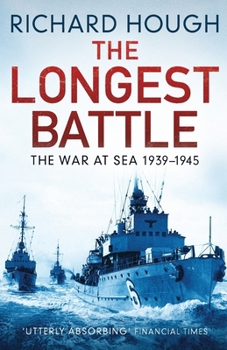The Longest Battle
Select Format
Select Condition 
Book Overview
'The Second World War demanded more of its sailors than any other war in history, in endurance and unremitting need to face danger - danger from increasingly lethal weapons and an ever-increasing need for vigilance by day and night.'
The war at sea - the longest battle of the Second World War - never ceased. From the Arctic Circle to the Pacific, the enemy threat was ever-present, on the surface, in the skies, and lurking beneath the waves.
In this comprehensive and compelling history, Richard Hough brings the titanic struggle to life. Using personal accounts from veterans of all sides, his book tells the story of the Second World War at sea, including the Battle of the Atlantic and the U-boat menace, the infamy of Pearl Harbor, the American triumph at Midway, naval operations in support of D-Day, and the greatest naval battle of all time, Leyte Gulf.
The definitive book about naval power in the Second World War, Richard Hough's masterpiece is essential reading for followers of Max Hastings and James Holland.
'We are in Richard Hough's debt' New York Times
'Utterly absorbing' Financial Times





